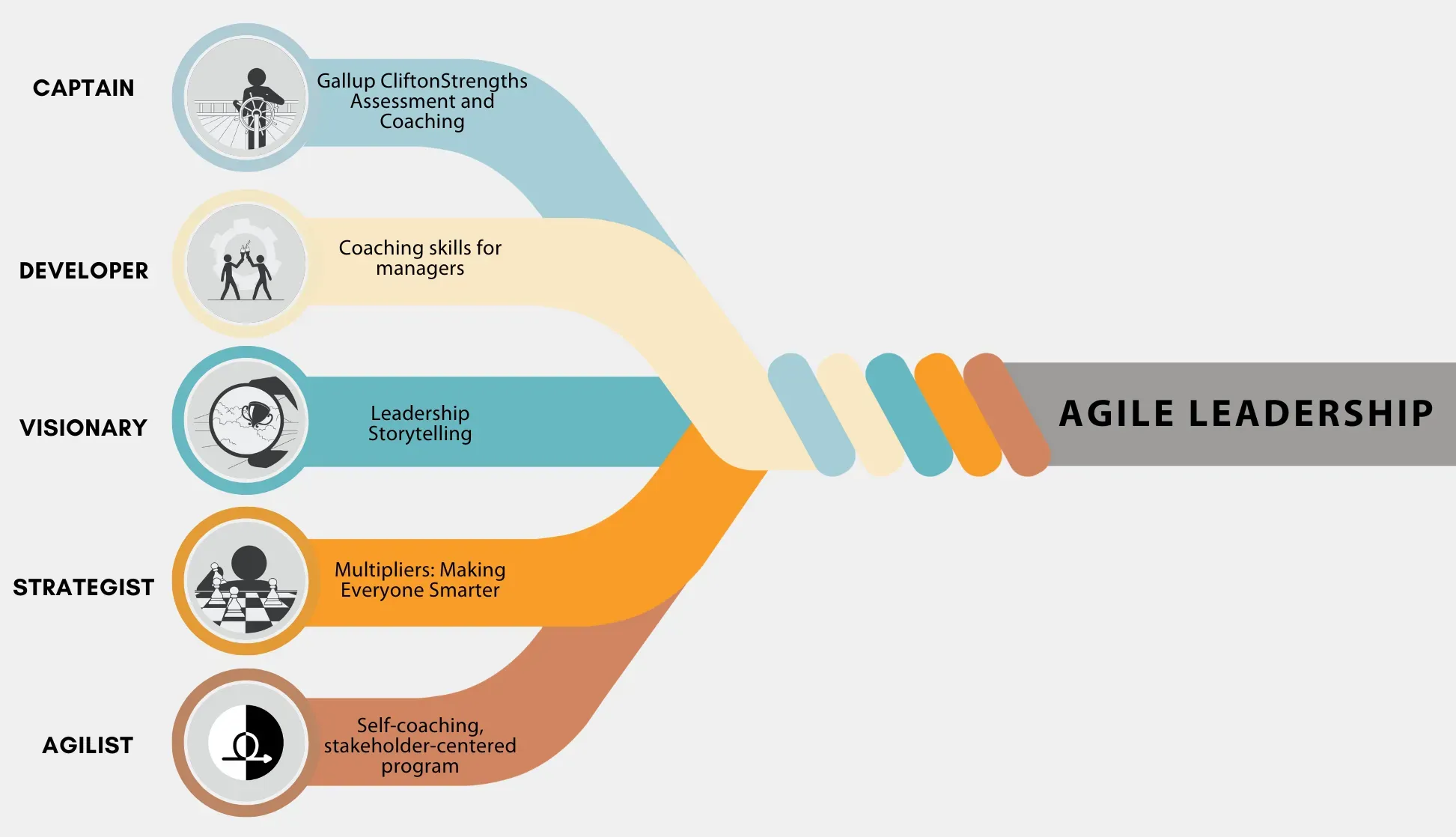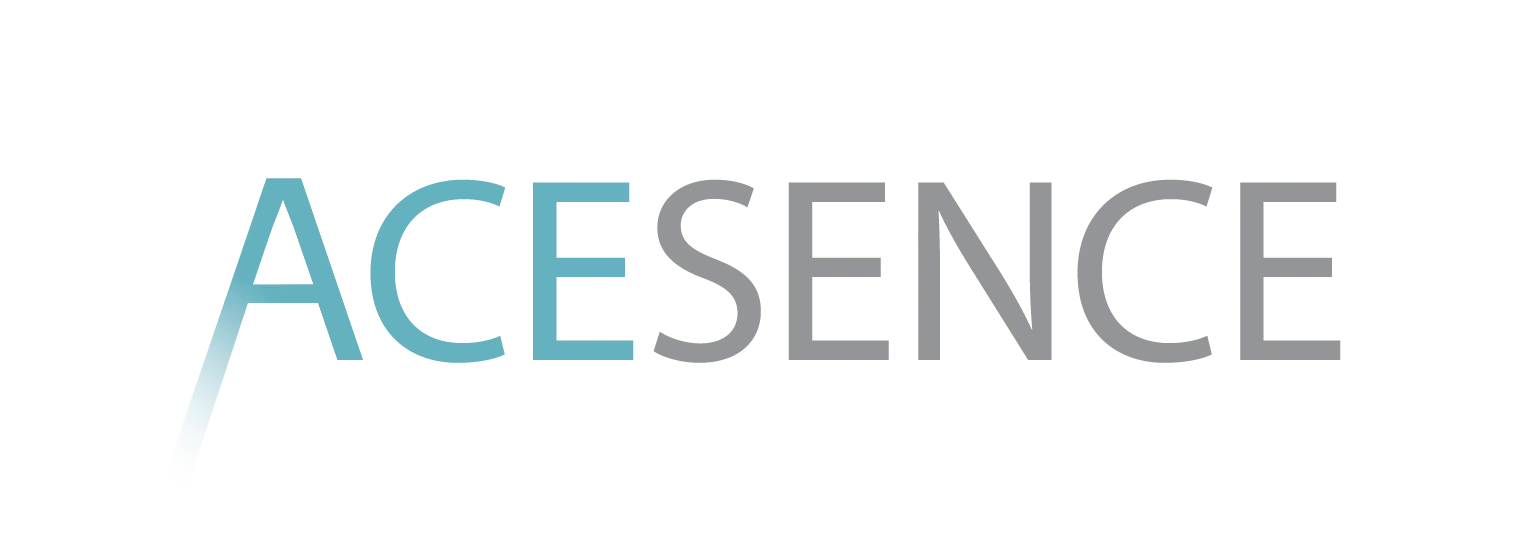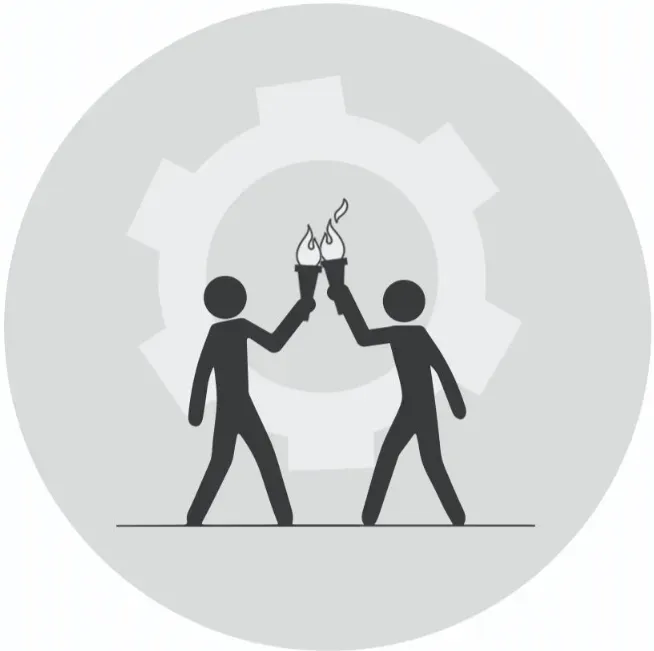Explore ACESENCE Agile Leadership Development Framework
The Essential Leadership Framework that Helps Leaders and Organizations Stay Relevant and Impactful, Sustainably.

Join the 1,000+ leaders who have experienced the mindset transformation.
Agile Leadership is the Key to Your Business Agility and Career Success
All-rounded Success in Career and Life
For driven leaders who are unwilling to settle for mediocrity and always striving for your highest potential, agile leadership is the sustainable leadership model for you.
Continuous Value Creation
If you are a leader who is passionate about creating agile teams and are consistently delivering high customer value, the five-part framework helps you develop the skills needed to make this a reality.
Future-Ready Leaders
Go beyond formal executive education. Change is the only constant in the uncertain world. Use our agile leadership framework to develop a leadership style that is advantageous for your organisational culture. This is advantageous whether you are trying to increase psychological safety or spearhead an agile transformation.

If you want to thrive in an uncertain world, then you need to first tap into the limitless potential of an Agile Mindset.
You could be concerned with business agility, trying to catalyze change in your company, or simply wondering what's the best way to develop a pipeline of highly effective leaders who are future-resilient. No matter which role you play in your organization, one thing is certain – change is coming.
That's why leaders like you need to develop the agility so that you can navigate the complex, real world.
This journey begins with the agile mindset.
Develop Agile Leadership Capabilities Predictably with our Proven Method
Leadership training without nudging the mindset, is only skin deep.
Undeniably, the simplest way for you to evaluate leaders is by observing their behavior and see if they exhibit the right leadership characteristics.
But this approach in itself is flawed. In the volatile business climate, weaknesses in leaders are exposed quicker. The pursuit of skills training for the purpose of demonstrating the "right skills" have left many organizations asking themselves the billion dollar question – why aren't we getting our return-on-investment despite the generous budget we've spent on leadership training?
Leadership training is expensive – and even more so when you focus on the wrong things. That's why at ACESENCE, we help you focus on the right ones.
We know the importance of a strong leadership foundation – because the rise and fall of your enterprise lies in the quality of leadership at all levels.
Start with the Agile Mindset
Here's a known fact – A poor mindset results in poor outcomes. That's why at ACESENCE, we design training that makes learning stick. Make the capabilities permanent because no matter how volatile the environment becomes, agile leaders will always succeed.
Authentic Leadership Styles
Instead of imposing a fixed leadership style, we guide leaders to discover theirs. Is it enough for managers to rely on old ways of doing things? Probably not. Our values-and-strengths-centered approach helps leaders gain attitudes and skills that are essential now and in the future.
Global Insights, Impactfully Applied
Learning about theories alone is rarely useful. That's why one of our mission is to "bridge the gap between theory and practice." With our tailored programs, we deliver practices that our global clients love – highly versatile, instantly useful and empowering.
Bite-Sized Learning, Lasting Results
Not just a theoretical training, we give you results – permanent behavior changes. Focusing first on the mindset, we break down the concepts so that your leadership development is inviting. Expect small steps that delivers big results.
Leading with agility is vital because it will raise your teams' innovation, improve problem solving, and agile decision making. In the business world where boundaries are blurred, leaders need to enable cross functional collaboration. This is not an easy task when the workforce is becoming increasingly diverse. How can you, the leader, enable seamless collaboration?
By leading with the human-centered agile leadership style, and bring trust and inclusion back.
Organizations can invest today by supporting leaders in their development. By putting in a place a structured leadership training program, they'll get results predictably instead of randomly. Sure, people can probably figure things out on their own but in a climate where talent is scarce, your best bet for corporate longevity is to have a pipeline of effective leaders ready to make a difference.
An intentional and structured approach to growing leadership talent will help you develop more great leaders. With the right skills and attitude, you'll harness the best ideas from your diverse talent pool, formulate the best strategy and inspire others to pursue a common vision – build a thriving company collectively so that work can be meaningful and purposeful.
All Organizations Need Agile Leaders
Employee engagement, revenue, leadership sustainability, business resilience
1. Engage and lead diverse employees
Diversity and inclusion might be top on your list of priorities. Having leaders who are agile and effective will help you engage and lead diverse employees.
2. Align and unite employees towards a common vision
Teams are moving towards self organization as employees desire autonomy. If your leaders have the characteristics and ability to align others, then you'll find your change and implementation much smoother.
3. Develop a pipeline of good leaders
Leaders are inspiring and they grow more leaders. By role modeling effective communication, influence, creative problem-solving and people management is one of the best way to imbue these qualities in future leaders.
Focus on every level of leadership – not only the top performers. Taking care of your pipeline where all employees can be leaders, and are given opportunities to be developed to their fullest potential will help you create multiple pathways to success. By focusing on the employee experience and human capital, you'll pave the way for your organization to achieve much better outcomes.
Five Steps to Developing Effective Agile Leadership
Nurture the five inner voices of leadership agility
Part of my value proposition is to provide simple solutions that overcomes your complex challenges. Having a framework gives you more ideas where you grow and transform your leadership.
A quick overview of what you can raise your agility by using the five inner voices that touch on team engagement, influencing people, language that inspire and empowering teams.

1. The Captain
In charge of your personal mastery and emotional regulation, I regard the Captain as the leader of the five inner voices. It enables all your other inner voices to work together. Unlike traditional leadership styles where emotions are often ignored or neglected, the changing profile of your employees requires you to now explore a different way of delivering value to your people.
Companies must also remember that many are currently going through transformations. The changes are often uncomfortable and a good leader in the team will smoothen the journey.
And for that, leaders can focus on strengthening the Captain for starters.
With our proven method, you too, can be a good leader today and a great leader tomorrow.
Discover the full guide in my upcoming book, Leaders People Love.
MEMBERSHIP PORTAL




